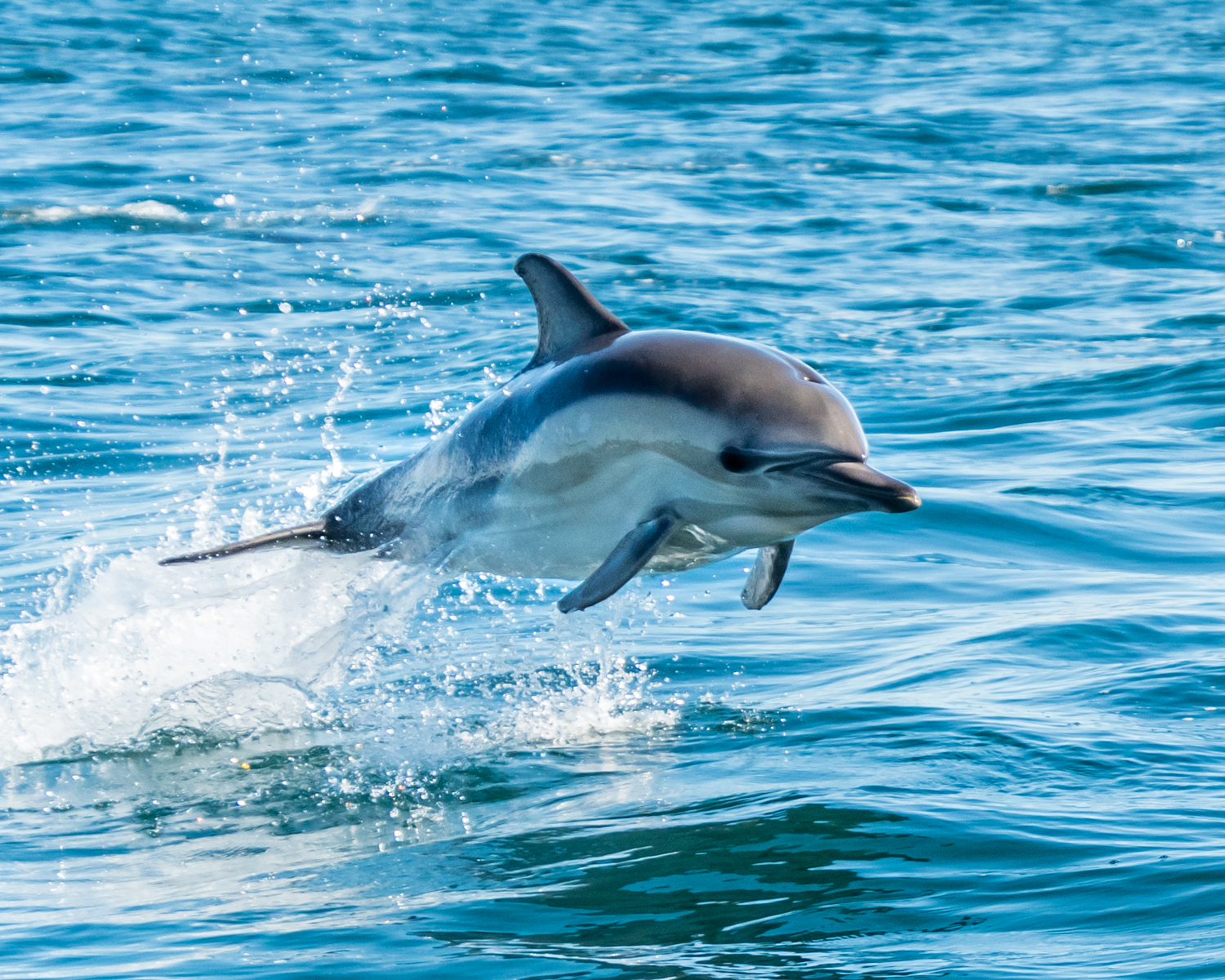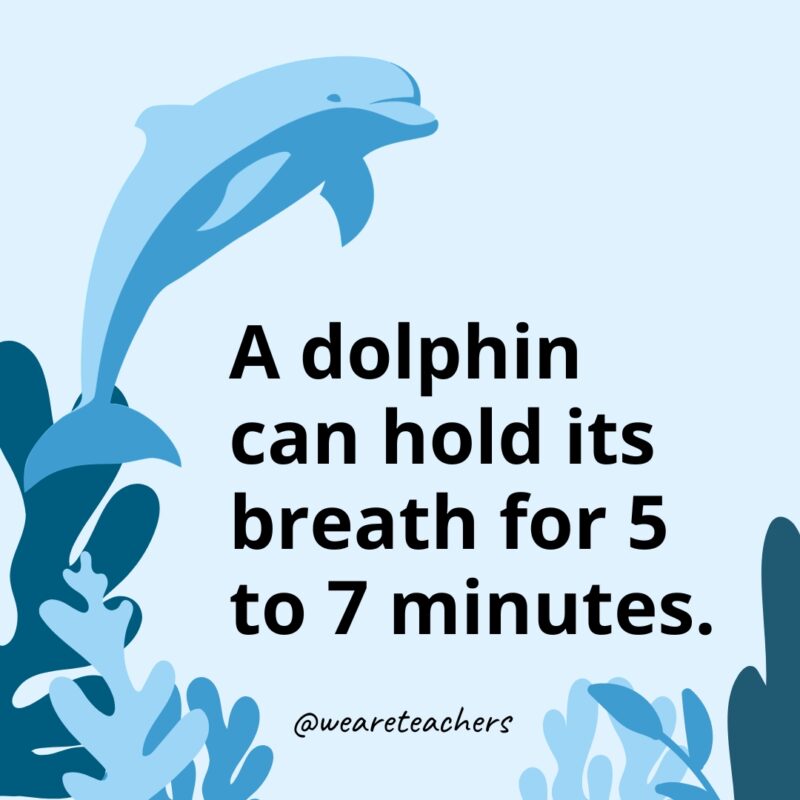Remarkable Dolphin Facts That Explain Their Amazing Navigating Abilities
Remarkable Dolphin Facts That Explain Their Amazing Navigating Abilities
Blog Article
Study the Sea: Captivating Dolphin Realities for Ocean Lovers
The world of dolphins offers a fascinating junction of knowledge, social habits, and eco-friendly value. With approximately 37 species, these aquatic mammals display a series of impressive characteristics that not only captivate sea lovers but also emphasize their crucial role in marine ecosystems. From their intricate communication techniques to their impressive problem-solving abilities, dolphins challenge our understanding of pet intelligence. Nonetheless, the pushing requirement for preservation initiatives to shield these animals and their environments elevates essential inquiries regarding our duty towards the sea's citizens. What implications do these aspects hold for our interactions with these impressive beings?
Dolphin Variety Diversity
Diversity is a trademark of the dolphin family members, incorporating a wide variety of species that display unique physical characteristics, habits, and environments. The household Delphinidae, typically called oceanic dolphins, makes up around 37 types, each adapted to certain environmental particular niches. For instance, the bottlenose dolphin (Tursiops truncatus) is renowned for its knowledge and adaptability, flourishing in both open and seaside ocean atmospheres.
In contrast, the orca (Orcinus orca), usually referred to as the awesome whale, is the biggest participant of the dolphin family and is identified by its striking black-and-white coloration. Orcas demonstrate complex social frameworks and hunting methods, showcasing the behavioral variety within the household. Other species, such as the spinner dolphin (Stenella longirostris), are noted for their acrobatic displays and preference for warmer waters, highlighting the flexibility of dolphins to numerous aquatic ecosystems.
Furthermore, river dolphins, including the pink river dolphin (Inia geoffrensis), inhabit freshwater environments, further showing the wide-ranging habitats that dolphins occupy. Dolphin Facts. This extraordinary variety not only improves marine communities however also emphasizes the relevance of preservation efforts to shield these amazing animals and their settings
Social Actions and Interaction
The intricate social behavior and interaction methods of dolphins are essential components of their existence, helping with group communication and enhancing survival. These highly smart aquatic mammals show complex social structures, frequently creating sheaths that can vary from a couple of individuals to over a hundred. Within these groups, dolphins participate in behaviors such as participating hunting, social play, and mutual protection, which foster solid bonds among participants.
Dolphins utilize a sophisticated selection of articulations, including clicks, whistles, and body language, to share information and express emotions. Their trademark whistles act as special identifiers, akin to names, allowing individuals to call out to each other. This vocal communication is matched by non-verbal signals, such as jumping, slapping the water, and integrated swimming, which additionally enhances their interactions.

Distinct Feeding Habits
Special feeding routines define dolphins, showcasing their adaptability and knowledge in numerous marine atmospheres. These marine mammals are recognized for their varied diets, which mostly contain fish, squid, and shellfishes. Their hunting methods can differ considerably, usually customized to the details prey and ecological problems.
One remarkable approach is participating hunting, where dolphins operate in teams to herd colleges of fish into tight formations, making it simpler for individuals to catch their meal. This social behavior not just boosts their feeding effectiveness yet also reinforces social bonds within the sheath. Furthermore, dolphins have actually been observed utilizing a strategy called "fish-whacking," where they utilize their tails to confuse or stun fish, assisting in simpler capture.
An additional interesting feeding practice is echolocation, which permits dolphins to identify target even in dirty waters. By releasing sound waves and analyzing the returning echoes, they can recognize the dimension, form, and area of their targets. This remarkable capacity emphasizes their versatility in various habitats, from superficial seaside locations to much deeper oceanic why not find out more waters. In general, the one-of-a-kind feeding behaviors of dolphins highlight their role as proficient killers within the aquatic community, demonstrating both intelligence and ingenuity.
Intelligence and Issue Addressing
Dolphins exemplify remarkable cognitive abilities that expand beyond their advanced feeding strategies. Their knowledge appears in their problem-solving abilities, social interactions, and ability for knowing. Study has demonstrated that dolphins can use devices, such as making use of aquatic sponges to protect their rostrums while foraging on the seafloor. This habits highlights their ability to manipulate their atmosphere properly and adjust strategies to improve survival.
Furthermore, dolphins exhibit advanced communication abilities, using a complicated system of clicks, whistles, and body language. Dolphin Facts. This interaction is important for working with team activities, such as searching and mingling, showing their capacity to work collectively towards a common objective. Their capability to comprehend abstract concepts, consisting of self-recognition in mirrors, even more emphasizes their cognitive class
In regulated studies, dolphins have shown a capacity to address problems and perform jobs that require both memory and critical thinking. These communications show not only knowledge but also a desire click for info to engage with their environment in unique methods. Overall, the cognitive expertise of dolphins puts them among one of the most smart varieties on the earth, cultivating a deeper gratitude for their function in marine ecosystems.
Preservation and Environmental Effect
Preservation efforts aimed at securing marine environments are essential for preserving dolphin populaces and their environments. Dolphins are very conscious environmental changes, and their survival is elaborately linked to the wellness of nautical ecosystems. Overfishing, air pollution, and environment change posture significant hazards to both dolphins and their settings.
Overfishing interferes with the food chain, leading to a decline in victim types necessary for dolphin survival. Moreover, contaminants such as chemicals and plastics accumulate in aquatic settings, endangering dolphins with intake and bioaccumulation. Raised water temperatures and sea acidification, effects of environment change, additionally jeopardize the delicate equilibrium of marine environments, affecting dolphin breeding and migratory patterns.
Preservation efforts, consisting of the facility of aquatic safeguarded areas (MPAs), play a vital function in securing these intelligent creatures. MPAs help mitigate human impact, allowing ecosystems to flourish and recoup. Public recognition projects and neighborhood interaction are likewise necessary, promoting a culture of stewardship towards aquatic life. By focusing on conservation initiatives, we can ensure that future generations enjoy the appeal and vigor of dolphins and the oceans they live in. Shielding aquatic ecological communities is not nearly their website conserving dolphins; it is concerning preserving the intricate web of life that sustains us all.
Verdict
Dolphins exemplify the complexity and richness of marine life through their varied species, complex social structures, and progressed cognitive abilities. As important elements of marine environments, dolphins underscore the necessity of ongoing preservation efforts to protect their habitats.
Other varieties, such as the rewriter dolphin (Stenella longirostris), are noted for their acrobatic screens and choice for warmer waters, highlighting the adaptability of dolphins to different marine ecological communities.
Generally, the one-of-a-kind feeding routines of dolphins highlight their role as experienced killers within the marine ecosystem, demonstrating both intelligence and resourcefulness.
On the whole, the cognitive expertise of dolphins positions them among the most smart types on the world, fostering a deeper gratitude for their function in marine ecosystems.

Report this page